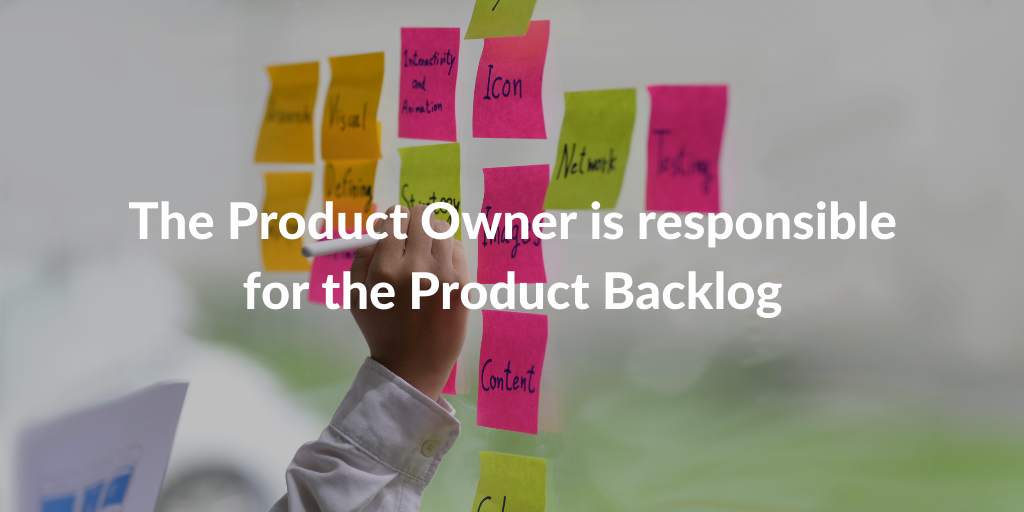Who is the Scrum Product Owner? Role and Responsibilities

As described in the Scrum Guide, there are three core roles in Scrum, responsible for meeting the project objectives: the Product Owner, the Scrum Master and the Development Team.
The Scrum Product Owner is the professional responsible for maximizing the value of the product resulting from the work of the Development Team or, in other words, for maximizing business value for the project.
He or she is responsible for articulating customer requirements and ensuring the business justification throughout the project. We can say this role embodies the voice of the Customer.
The Product Owner is the sole person responsible for managing the Product Backlog.
This means:
- Clearly expressing Product Backlog items
- Ordering the items in the backlog to best achieve goals
- Optimizing the value of the work of the Development Team
- Ensuring that the Product Backlog is visible, transparent and clear to all and that it shows what the Scrum Team will work on next
- Ensuring the Development Team understands items in the Product Backlog to the level needed.
The Product Owner is one person, not a committee. He/she may represent the desires of a committee, but those wanting to change a Product Backlog item’s priority must address the Product Owner.
The Product Owner’s decisions are visible in the Product Backlog and the Development Team works according to these defined set of requirements. It’s fundamental that the entire organization respects his or her decision in order for the Product Owner to succeed.
The Responsibilities of the Scrum Product Owner
The Product Owner represents the interests of the stakeholder community to the Scrum Team.
He/she is responsible for:
- Ensuring clear communication of product or service functionality requirements to the Scrum Team
- Defining Acceptance Criteria, and ensuring those criteria are met.
The Product Owner must always maintain a dual view, understanding and supporting the needs and interests of all stakeholders, while also understanding the needs and workings of the Scrum Team.
The following are the specific responsibilities of the Scrum Product Owner:
- Define the Project Vision
- Help create the Project Charter and Project Budget
- Identify Stakeholder(s)
- Help determine Scrum Master and Scrum Team members
- Help develop a Collaboration Plan
- Help develop the Team Building Plan with Scrum Master(s)
- Create Epic(s) and Personas
- Prioritize the items in the Product Backlog
- Define Done Criteria
- Create a Release Planning Schedule
- Help create User Stories
- Define Acceptance Criteria for every User Story
- Clarify User Stories
- Work with Scrum Team to commit User Stories
- Explain User Stories to the Scrum Team while creating the Task List
- Provide guidance and clarification to the Scrum Team in estimating effort for tasks
- Clarify requirements to the Scrum Team while creating the Sprint Backlog
- Clarify business requirements to the Scrum Team
- Accept/Reject Deliverables
- Provide necessary feedback to Scrum Master and Scrum Teams
- Update Release Plan and Prioritized Product Backlog
- Help deploy Product Releases and coordinates this with the customer
- Participate in Retrospective Sprint Meetings
- Secure the initial and ongoing financial resources for the project.
The necessary skills for being a Scrum Product Owner
The Scrum Product Owner should be a Scrum Expert, knowing Scrum processes.
He/she also must have business domain knowledge and excellent communication skills.
Other important soft skills, highlighted by the Scrum Guide are:
- Ability to handle uncertainties
- Negotiation Skills
- Approachable
- Proactive
- Decisive
- Pragmatic
- Goal-Oriented
Sources: Schwaber and Sutherland, The Scrum Guide; © 2017 SCRUMstudy™.
A Guide to the Scrum Body of Knowledge (SBOK™ Guide).






